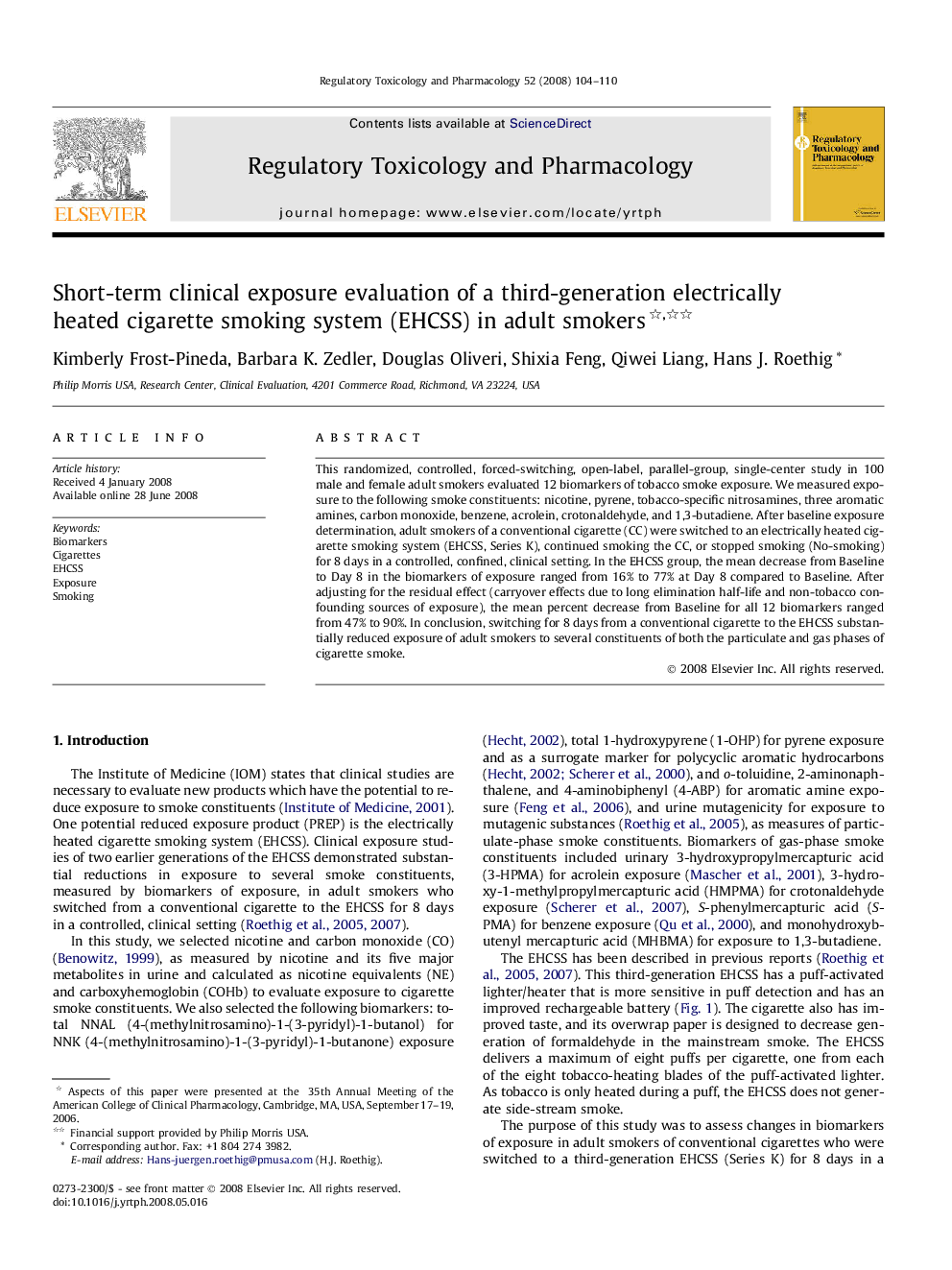| Article ID | Journal | Published Year | Pages | File Type |
|---|---|---|---|---|
| 2592633 | Regulatory Toxicology and Pharmacology | 2008 | 7 Pages |
This randomized, controlled, forced-switching, open-label, parallel-group, single-center study in 100 male and female adult smokers evaluated 12 biomarkers of tobacco smoke exposure. We measured exposure to the following smoke constituents: nicotine, pyrene, tobacco-specific nitrosamines, three aromatic amines, carbon monoxide, benzene, acrolein, crotonaldehyde, and 1,3-butadiene. After baseline exposure determination, adult smokers of a conventional cigarette (CC) were switched to an electrically heated cigarette smoking system (EHCSS, Series K), continued smoking the CC, or stopped smoking (No-smoking) for 8 days in a controlled, confined, clinical setting. In the EHCSS group, the mean decrease from Baseline to Day 8 in the biomarkers of exposure ranged from 16% to 77% at Day 8 compared to Baseline. After adjusting for the residual effect (carryover effects due to long elimination half-life and non-tobacco confounding sources of exposure), the mean percent decrease from Baseline for all 12 biomarkers ranged from 47% to 90%. In conclusion, switching for 8 days from a conventional cigarette to the EHCSS substantially reduced exposure of adult smokers to several constituents of both the particulate and gas phases of cigarette smoke.
